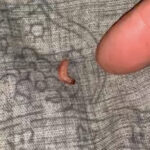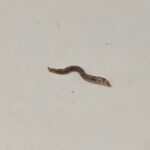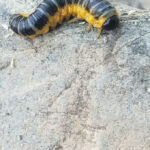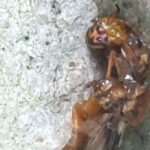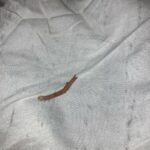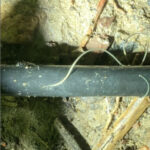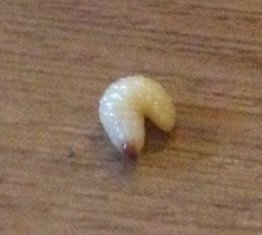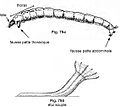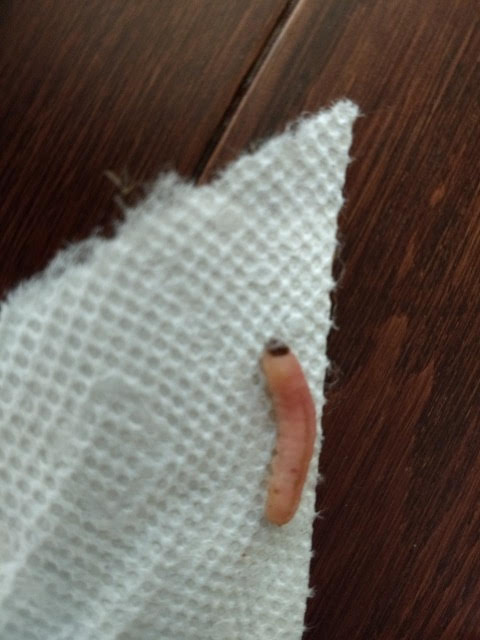
“I found these four worms in our dining area”, writes this reader in her submission regarding the segmented, pink, worm-like creature pictured below. “Near the back door. What kind of worm is this? How did they get inside? Thank you.” From the looks of it, we think our reader may have found erythrina stem borer caterpillars. The name doesn’t exactly roll off the tongue. The erythrina stem borer moth is native to the Americas, and the adult moth is a tiny, brown creature. However, its harmless appearance shouldn’t fool you: they are actually pretty destructive creatures. At least, their caterpillars are.
Of course, we don’t want to alarm our reader unnecessarily, and we should clarify that erythrina stem borer caterpillars are not harmful to humans or pets. They do not bite, sting, or possess venom. Likewise, they are not parasites. What we mean when we say that they are destructive is that they are pests. Specifically, they are pests to coral trees: Erythrina trees (hence the name). As their name also suggests, they damage these trees by boring into them. They tunnel through the trees they infest by eating through them, and over the course of several years, these guys can kill entire trees. Efforts have been made to save such trees, but none have been successful so far. It seems that if a tree falls prey to these critters, it is as good as gone.
Now, there is no record of these guys being harmful or destructive to household items, or to households themselves, so our reader does not need to worry about this. In fact, erythrina stem borer caterpillars turn pink right before pupation. So, what we think is happening here is that these caterpillars infested her home because it seemed like a safe and stable environment in which to pupate. To be clear, pupation is the stage during which a caterpillar spins its cocoon in which it will metamorphose into a moth. To rid herself of the invasion, all our reader needs to do is move the caterpillars outside. Even though the caterpillars are harmless to humans and pets, and we still recommend avoiding physical contact when moving the caterpillars outside, as unforeseen allergic reactions can occur. The best way to avoid contact is to scoop the caterpillars onto a dustpan using a brush or some other oblong object.
In conclusion, we think that the pink worms our reader found in her living area are erythrina stem borer caterpillars. They are harmless to humans and pets, though very harmful to coral trees. We hope this helps, and we wish our reader the very best!
All About Worms is always free, always reader-supported. Your tips via CashApp, Venmo, or Paypal are appreciated! Receipts will come from ISIPP Publishing.
You might also find these guys interesting!




